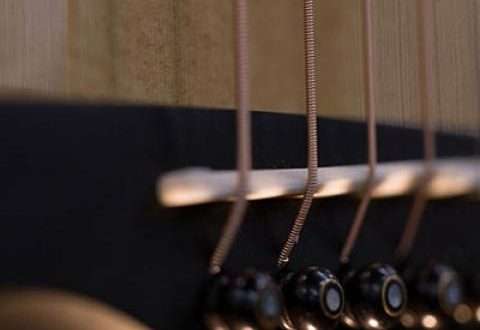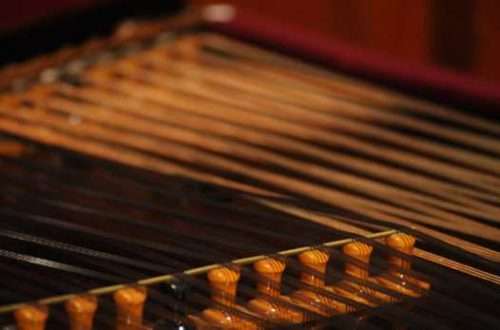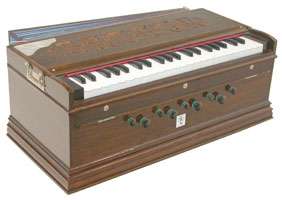
History of the harmonium
The organ today is a representative of the past. It is an integral part of the Catholic Church, it can be found in some concert halls and in the Philharmonic. The harmonium also belongs to the organ family.
Physharmonia is a reed keyboard musical instrument.  Sounds are made with the help of metal reeds, which, under the influence of air, make oscillatory movements. The performer only needs to press the pedals at the bottom of the instrument. In the middle of the instrument is the keyboard, and below it are several wings and pedals. The highlight of the harmonium is that it is controlled not only by the hands, but also by the legs and knees. With the help of the shutters, the dynamic shades of the sound change.
Sounds are made with the help of metal reeds, which, under the influence of air, make oscillatory movements. The performer only needs to press the pedals at the bottom of the instrument. In the middle of the instrument is the keyboard, and below it are several wings and pedals. The highlight of the harmonium is that it is controlled not only by the hands, but also by the legs and knees. With the help of the shutters, the dynamic shades of the sound change.
The harmonium is somewhat similar to the piano, but these two musical instruments belonging to different families should not be confused. According to a long tradition, the instrument is made of wood. The harmonium is up to 150 cm high and 130 cm wide. Thanks to five octaves, you can play any music and even improvise on it. The instrument belongs to the class of aerophones.
The history of the harmonium dates back to the 19th century. A number of events contributed to the creation of a musical instrument. The Czech organ master F. Kirshnik, who lived in St. Petersburg in 1784, came up with a new way of extracting sounds. He invented the espressivo mechanism, with which the sound could be amplified or weakened. Everything depended on how deep the performer pressed the key (“double pressing”). It is this mechanism that V.F. Odoevsky applied in 1849 in the manufacture of the mini-organ “Sebastianon”.
In 1790 in Warsaw, a student of Kirschnik, Raknitz, 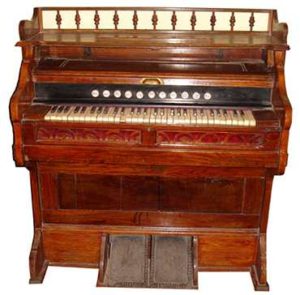 a change was made to the G.I. Vogler (slip tongues), with whom he toured many countries of the world. The device continued to improve, each time something new was introduced.
a change was made to the G.I. Vogler (slip tongues), with whom he toured many countries of the world. The device continued to improve, each time something new was introduced.
The prototype of the harmonium, the expressive organ, was created by G.Zh. Grenier in 1810. In 1816, an improved tool was presented by the German master I.D. Bushman, and in 1818 by the Viennese master A. Heckl. It was A. Heckl who called the instrument “harmonium”. Later A.F. Deben made a smaller harmonium, shaped like a piano.
In 1854, the French master V.Mustel presented a harmonium with a “double expression” (“double expression”). The instrument was with two manuals, 6-20 registers, which were turned on with the help of wooden levers or by pressing buttons. The keyboard was divided into two sides (left and right). 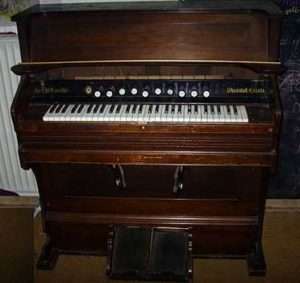 Inside were two active “sets” of bars with registers. Since the 19th century, the design has continued to improve. First, perkussion was introduced into the instrument, with which it was possible to give a clear attack of the sound, then the prolongement device, which made it possible to prolong the sound.
Inside were two active “sets” of bars with registers. Since the 19th century, the design has continued to improve. First, perkussion was introduced into the instrument, with which it was possible to give a clear attack of the sound, then the prolongement device, which made it possible to prolong the sound.
In the 19th and 20th century, the harmonium was mainly used for home music-making. At this time, the “harmonium” was often called the “organ”. But, only those who were far from music called it that, since the organ is a wind tubular instrument, and the harmonium is reed.
Since the middle of the 20th century, it has become less and less popular. Today, there are not so many harmoniums made, only true fans buy it. The instrument is still very useful for professional organists during rehearsals, learning new compositions and for training hands and feet. The harmonium rightfully occupies a prominent place in the history of musical instruments.




